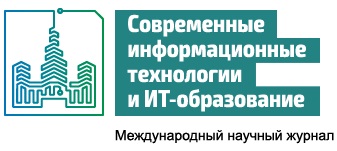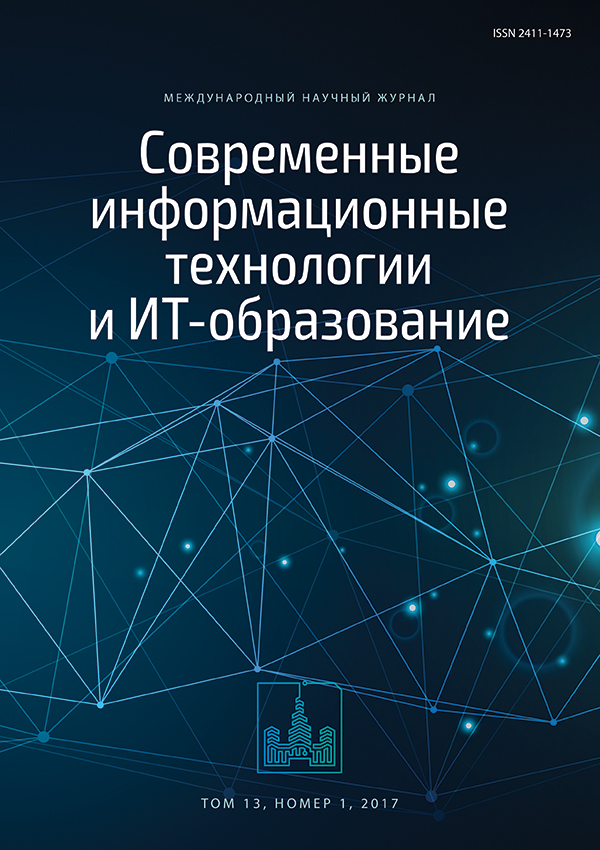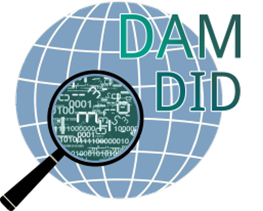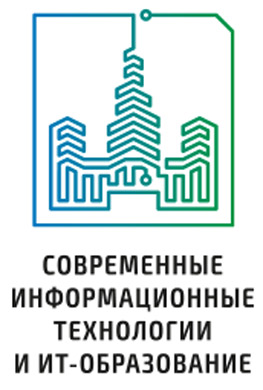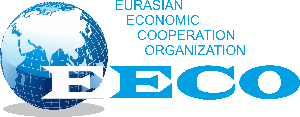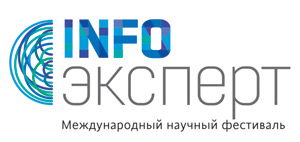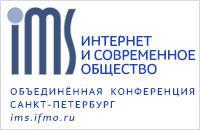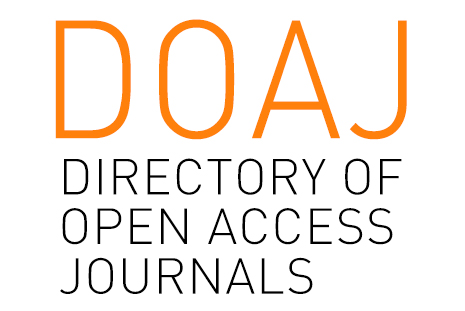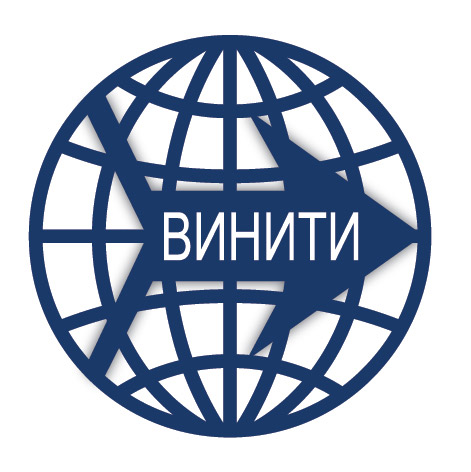АРХИТЕКТУРА ПАРАЛЛЕЛЬНОГО ПРОГРАММНОГО ОБЕСПЕЧЕНИЯ ДЛЯ СИМУЛЯЦИИ МНОГОМЕРНЫХ ЗАДАЧ
Аннотация
Рассмотрена архитектура параллельного программного обеспечения, построенная на основе шаблона проектирования «Мост», и предназначенная для симуляции многомерных задач (сетевой динамики, сжатия многомерных данных, распознавания образов). Архитектура основана на объектно-ориентированном подходе в программировании и использовании шаблонов проектирования. Создается иерархия классов, реализующих методы для самых разнообразных решателей. Для параллельного программирования на кластере процессоров Intel Core i5-2300 и графических процессоров GM206 используются карты (NVidia Geforce GTX 950) MPI- и CUDA-технологии. Приведены примеры решения некоторых многомерных задач: сетевой динамики, сжатия данных, распознавания образов.
Литература
2. Kalachev A.A., Krasnov A.E., Nadezhdin E.N., Nikol'skiy D.N., Repin D.S. Model' geterogennoy seti dlya simulyatsii neyrodinamicheskikh zadach. // Sovremennye informatsionnye tekhnologii i IT-obrazovanie. 2016, Tom 12, №1. S. 80–90. (ISSN 2411-1473).
3. Krasnov A.E., Krasnikov S.A., Chernov E.A. Method of the compression of phase portraits of generalized spectral data for solving their clustering and recognition // In math. of International Scientific-Practical Conference «Innovative Information Technologies» (Prague, 21–25 april 2014), 2014, Volume 2, section 2. – M.: HSE, P. 664–670.
4. Krasnov A.E., Nikol'skiy D.N., Kalachev A.A. Snizhenie razmernosti spektral'nykh dannykh neyropodobnym algoritmom // Svidetel'stvo o gosudarstvennoy registratsii programmy dlya EVM, Rossiyskaya federatsiya, № 2017612195, 2017.
5. Nikol’skii D. N. Mathematical simulation of the evolution of a liquid-liquid interface in piecewise inhomogeneous layers of complex geological structure // Computational Mathematics and Mathematical Physics. June 2013, Volume 53, Issue 6, P. 858–865. doi:10.1134/S0965542513060146.
6. Nikol’skii D. N. Three-dimensional evolution of the boundary of a polluted area in a bounded piecewise homogeneous porous material // Computational Mathematics and Mathematical Physics. May 2011, Volume 51, Issue 5, P. 855–861. doi:10.1134/S0965542511050125.
7. Krasnov A.E., Krasnikov S.A., Kompanets I.N. Correlation-statistical methods of distinguishing complicated and noisy spectra // Journal of Optics A: Pure and Applied Optics. 2002, Volume 4, № 3. P. 329 – 337.
8. Krasnov A.E., Golovkin M.E. Metody vydeleniya invariantnykh priznakov izobrazheniy // Aktual'nye problemy sovremennoy nauki. 2016, №4 (89), P. 209–212.
9. Krasnov A.E., Nadezhdin E.N., Nikol'skiy D.N., i dr. Neyrosetevoy podkhod k otsenivaniyu effektivnosti funktsionirovaniya organizatsii na osnove agregirovaniya pokazateley ee deyatel'nosti // Informatizatsiya nauki i obrazovaniya. Yanvar' 2017, №1, S. 141–154.
10. Gamma E., Khelm R., Dzhonson R., Vlissides Dzh. Priemy ob"ektno-orientirovannogo proektirovaniya. – St. Peterburg: SPb. Piter, 2016. – 366 s.
11. Bjarne S. The C++ Programming Language, - 4th Edition. Addison-Wesley, 2013. –1368 p.
12. Scott M. Effective Modern C++: 42 Specific Ways to Improve Your Use of C++11 and C++14. O'Reilly Media, 2014. 384 p.
13. Pu C.-L., Pei W.-J., Michaelsond A. Robustness analysis of network controllability // Physica, 2012, A 391. P. 4420–4425.
14. Izhikevich E.M. Dynamical Systems in Neuroscience: The Geometry of Excitability and Bursting // Cambridge. Massachusetts. London. England: The MIT Press, 2007. – 497 р.
15. Klingspor M. Hilbert transform: Mathematical theory and applications to signal processing // LiTH - MAT - EX, 2015. – 76 p.
16. Krasnov A.E., i dr. Osnovy spektral'noy komp'yuternoy kvalimetrii zhidkikh sred / Pod redaktsiey prof. Krasnova A.E. - M: «Yurisprudentsiya», 2006. - 264 p.
17. Kazakov K.V., Kalachev A.A., Krasnov A.E., Nikol'skiy D.N., Shevelev S.A. Sravnenie effektivnostey razlicheniya signalov na fone sil'nykh pomekh na osnove mnogokriterial'noy i neyrosetevoy tekhnologiy. Innovatsionnye, informatsionnye i kommunikatsionnye tekhnologii // Sbornik trudov XIII Mezhdunarodnoy nauchno-prakticheskoy konferentsii. / Pod red. S.U. Uvaysova. – Moskva: Assotsiatsiya vypusknikov i sotrudnikov voenno-vozdushnoy inzhenernoy akademii im. prof. Zhukovskogo, 2016,. S. 257–259.

Это произведение доступно по лицензии Creative Commons «Attribution» («Атрибуция») 4.0 Всемирная.
Редакционная политика журнала основывается на традиционных этических принципах российской научной периодики и строится с учетом этических норм работы редакторов и издателей, закрепленных в Кодексе поведения и руководящих принципах наилучшей практики для редактора журнала (Code of Conduct and Best Practice Guidelines for Journal Editors) и Кодексе поведения для издателя журнала (Code of Conduct for Journal Publishers), разработанных Комитетом по публикационной этике - Committee on Publication Ethics (COPE). В процессе издательской деятельности редколлегия журнала руководствуется международными правилами охраны авторского права, нормами действующего законодательства РФ, международными издательскими стандартами и обязательной ссылке на первоисточник.
Журнал позволяет авторам сохранять авторское право без ограничений. Журнал позволяет авторам сохранить права на публикацию без ограничений.
Издательская политика в области авторского права и архивирования определяются «зеленым цветом» в базе данных SHERPA/RoMEO.
Все статьи распространяются на условиях лицензии Creative Commons «Attribution» («Атрибуция») 4.0 Всемирная, которая позволяет другим использовать, распространять, дополнять эту работу с обязательной ссылкой на оригинальную работу и публикацию в этом журналe.
